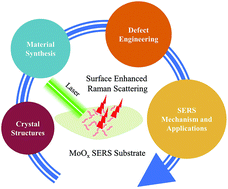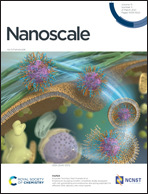Synthesis and defect engineering of molybdenum oxides and their SERS applications
Abstract
Surface-enhanced Raman scattering (SERS) spectroscopy has been developed into a cross-disciplinary analytical technology through exploring various materials’ Raman vibrational modes with ultra-high sensitivity and specificity. Although conventional noble-metal based SERS substrates have achieved great success, oxide-semiconductor-based SERS substrates are attracting researchers’ intensive interest due to their merits of facile fabrication, high uniformity and tunable SERS characteristics. Among all the SERS active oxide semiconductors, molybdenum oxides (MoOx) possess exceptional advantages of high Raman enhancement factor, environmental stability, recyclable detection, etc. More interestingly, the SERS effect of the MoOx SERS substrates may involve both the electromagnetic enhancement mechanism and the chemical enhancement mechanism, which is determined by the stoichiometry and morphology of the material. Therefore, the focus of this review will be on two critical points: (1) synthesis and material engineering methods of the functional MoOx material and (2) MoOx SERS mechanism and performance evaluation. First, we review recent works on the MoOx preparation and material property tuning approaches. Second, the SERS mechanism and performance of various MoOx substrates are surveyed. In particular, the performance uniformity, enhancement factor and recyclability are evaluated. In the end, we discuss several challenges and open questions related to further promoting the MoOx as the SERS substrate for monitoring extremely low trace molecules and the theory for better understanding of the SERS enhancement mechanism.

- This article is part of the themed collection: Recent Review Articles


 Please wait while we load your content...
Please wait while we load your content...